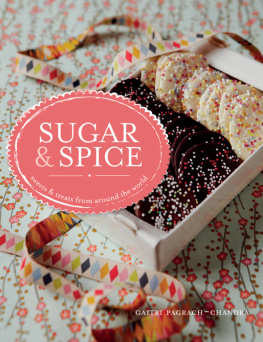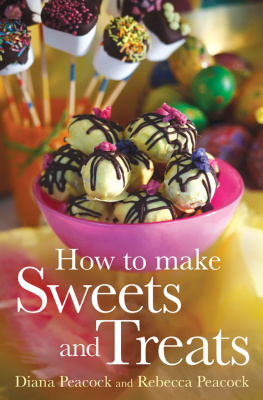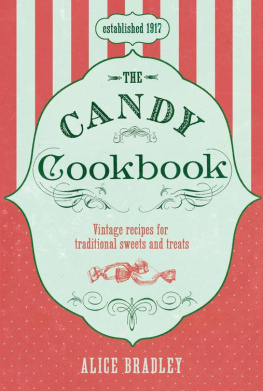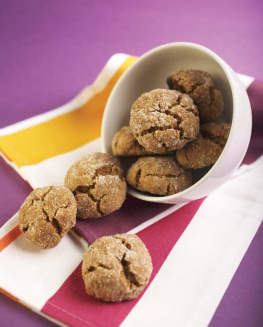More great Pavilion titles

 www.anovabooks.com
www.anovabooks.com



My Sweet Life
Sugar is in my blood, probably more so than in most peoples. I dont mean that I suffer from any sugar-related affliction, but simply that it has always been a part of my life and it is a bond that goes back several generations. I was born and brought up in Guyana and my ancestors were indentured labourers who were recruited in India to fill the labour void created by the abolition of slavery. The connection of sugar and slavery is too deep and harrowing a topic to be dealt with here, so I shall confine myself to the remark that the indentured labourers were the fortunate ones; they worked extremely hard, but saw some reward for their labour. They were bound by contract to work on a specific plantation for a fixed number of years, after which they could either be repatriated or have the passage commuted to a land grant. Most of them stayed on, as the British colony had more to offer than the old country on the other side of the world. Sugar remained a mainstay of the countrys economy, and with the passing of several generations and improved educational opportunities many were able to achieve admirable positions in the local sugar hierarchy. And so it was that I grew up on a series of sugar plantations, a comfortable little self-contained world that was a quaint mixture of British-inspired living combined with individual ethnicity. The sight of sugar cane in its various stages of growth as well as the tantalising aromas that accompany sugar production were part of my everyday life. Needless to say, as children we regularly sneaked into the factory and persuaded someone to hand out samples of cane juice, molasses or fresh sugar, but there was more to the sweetness of plantation life.
The Club was the centre of social life and while the building itself was different from plantation to plantation, the system remained unchanged. It was geared primarily around adult activities, and that was where our parents had a drink or two after an afternoon of bridge or a few strenuous sets of tennis, or simply as a prelude to dinner. If we happened to spot them as we passed by after a hard days play, we joined them as unobtrusively as we could. There was always a games room with billiard and card tables; there was a little library with ancient novels and outdated copies of various English magazines. (They came by boat in those days.) Cool and shady verandas were plentiful as were comfortable armchairs set in conversational groups. These would be shoved to one side on Friday evenings when we had our weekly film show. The films themselves were real classics in the sense that we had seen some of them so often that we knew them by heart and never hesitated to predict the outcome vociferously to each other. John Wayne, Doris Day, Abbot and Costello, Jerry Lewis and company were all old friends, and if the elderly projector had a little glitch every so often, it simply meant an extra chance to collect refreshments.
But the reason Im telling you about the club is because, for the children, it was the centre of sweets. There was no shop within our closed community, but the bar at the club was stocked with all kinds of chocolate, sweets, biscuits, nuts, ice cream and drinks. Until I was about eight or so, and we moved to another plantation, the club at Skeldon was absolutely my most favourite place and the barman was one of my most valued friends. This mans generosity knew no bounds. I had to pass the building on my way to or from our house and instead of one of my speedy rides on my tubby-tyred bike, I would pedal at a painfully slow pace, looking up anxiously at the side veranda that bordered on the bar. If he was there, we would have a short but extremely pleasing interchange, consisting of mutual greetings and the question of whether I wanted a bar of chocolate. Obviously, I never refused the offer and it was thrown down for me to catch. (Several years later I learned about bar tabs and monthly settlements.) But that wasnt all. The games room was an important place. The men played snooker and other games and used packets of cigarettes as stakes. My father played a lot of snooker and to make it better, he didnt smoke. Why was this better? He had his winnings handed out in chocolate bars. Life was good. Before I go on, let me share a tip with you. Chocolate, of course, softens incredibly fast in the heat of the tropics, so we used to keep the main stock in the refrigerator. However, the best way to eat it was to take a room temperature bar and remove the outer wrappers. Then we helped the foil-sealed bar to melt by holding it between hot little hands. When it reached the appropriate stage, a corner was torn off and the bar was applied to eager mouths and gently squeezed until there was nothing but crumpled foil left. Gross, I know, but so delicious.
Before we leave the delights of the Skeldon club, I just want to tell you how we were showered with sweets at Christmas parties. An enterprising parent or member of staff hit upon a way to keep us reasonably occupied while we waited with mounting suspense for Santa. (Santa was a profusely sweating father or other handy male who was bulked out and swaddled in the universally known outfit and driven in on the back of the red Land Rover that served as the plantations fire engine.) We were herded into the games room and subtly grouped under the huge ceiling fans and all of a sudden a shower of sweets flew all around us. As we scrambled to collect them, we never saw the hand that hovered by the fan switch just as we hadnt seen someone perched on a ladder painstakingly lining the flat blades of the fans with sweets.
Several years passed and many sweet treats were enjoyed, from imported toffees to local coconut drops and Indo-Guyanese sweets, which included the goodie bags my paternal grandfather received when he officiated as a pandit (Hindu priest) at religious ceremonies. It was time for a new phase. I left for university in Nova Scotia, ready to face whatever challenge was thrown my way, leaving behind a younger sister and parents who were comforted by the knowledge that the daughter of family friends lived there and could keep an eye on me. My years in Halifax provided me with a degree in political science and modern languages (which involved an excursion to Spain, but more about this shortly) as well as an increasingly more intimate relationship with real Indian sweets. I should explain that the food taken by Indian indentured labourers to the Caribbean was quite basic fare and, while it was good, it had always been based on availability. Existing in isolation, it remained quite static until the late 1970s, when India started spending a lot of money on cultural enrichment for the diaspora in an attempt to re-connect them with their heritage. In Guyana, fresh and powdered milk were easily obtained, but until that time very few people made things like paneer, for instance, the soft fresh cheese that is such a wonderful base for any number of sweets.











 www.anovabooks.com
www.anovabooks.com

